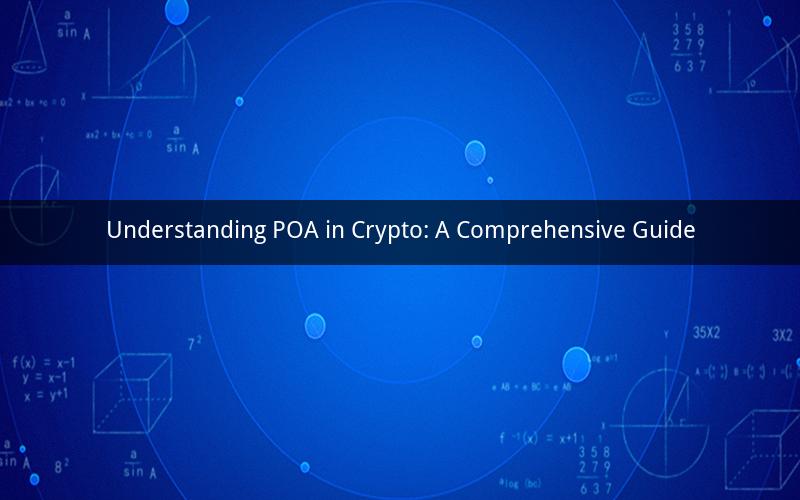
In the rapidly evolving world of cryptocurrencies, various consensus mechanisms have been developed to ensure the security and reliability of blockchain networks. One such mechanism is Proof of Authority (POA). This article delves into the concept of POA in crypto, exploring its workings, benefits, and potential drawbacks.
What is Proof of Authority (POA)?
Proof of Authority (POA) is a consensus algorithm used in blockchain networks to validate transactions and create new blocks. Unlike Proof of Work (POW), which relies on computational power, POA leverages the authority of selected validators to reach consensus. These validators are typically chosen based on their reputation, stake in the network, or other criteria.
How does Proof of Authority work?
In a POA-based blockchain network, validators are selected to create new blocks and validate transactions. These validators are often referred to as "delegates" or "witnesses." The process involves the following steps:
1. Validator Selection: Validators are chosen based on predetermined criteria, such as reputation, stake, or other factors. This selection process ensures that only trusted and committed individuals participate in the network.
2. Block Creation: Once selected, validators create new blocks containing transactions. These blocks are then broadcasted to the network for verification.
3. Verification: Other nodes in the network validate the new blocks by checking the authenticity of the transactions and the integrity of the block's structure.
4. Consensus: If the majority of nodes agree that the new block is valid, it is added to the blockchain, and the process repeats.
Benefits of Proof of Authority
POA offers several advantages over traditional consensus mechanisms like Proof of Work:
1. Energy Efficiency: Since POA does not require miners to solve complex mathematical puzzles, it consumes significantly less energy than POW. This makes it an environmentally friendly option.
2. Faster Transactions: The absence of mining processes in POA allows for faster transaction confirmation times. In some POA-based networks, transactions can be confirmed within seconds or minutes, as opposed to hours or days in POW networks.
3. Reduced Centralization Risk: POA can help mitigate the centralization risks associated with POW. Since validators are chosen based on specific criteria, the network is less likely to be dominated by a few powerful entities.
Drawbacks of Proof of Authority
Despite its benefits, POA also has some drawbacks:
1. Security Concerns: The selection of validators in POA-based networks can be subject to manipulation or influence. If a malicious actor gains control over a significant number of validators, they could potentially compromise the network's security.
2. Lack of Decentralization: While POA can help reduce centralization risks, it still relies on a limited number of validators. This can lead to a less decentralized network compared to fully decentralized systems like Proof of Stake (PoS).
5 Questions and Answers about Proof of Authority
1. Q: Can any individual become a validator in a POA-based network?
A: No, individuals must meet specific criteria, such as having a good reputation or a significant stake in the network, to become a validator.
2. Q: How does the selection process for validators work in a POA network?
A: The selection process varies depending on the specific network. Some networks use a random selection process, while others may rely on reputation or stake in the network.
3. Q: Can a validator be removed from a POA network?
A: Yes, validators can be removed if they are found to be acting maliciously or violating network rules. This helps maintain the integrity and security of the network.
4. Q: How does Proof of Authority compare to Proof of Stake (PoS) in terms of energy consumption?
A: POA is generally more energy-efficient than PoS, as it does not require mining processes. However, both mechanisms are more energy-efficient than Proof of Work (POW).
5. Q: Can a Proof of Authority network be attacked by a 51% attack?
A: While a 51% attack is less likely in a Proof of Authority network compared to a Proof of Work network, it is not impossible. If a malicious actor gains control over a majority of validators, they could potentially manipulate the network.
In conclusion, Proof of Authority (POA) is a consensus mechanism that offers several benefits over traditional Proof of Work (POW) systems. By leveraging the authority of selected validators, POA-based networks can achieve faster transaction times and reduced energy consumption. However, it is important to be aware of the potential security concerns and centralization risks associated with POA. As the crypto industry continues to evolve, understanding the nuances of different consensus mechanisms like POA is crucial for investors and developers alike.